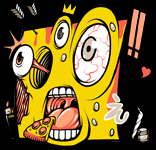The Non-Fungible Token (NFT) Revolution: Art for the Digital Age
In recent years, the art world has witnessed a revolution of unprecedented proportions – the rise of Non-Fungible Tokens (NFTs). These digital assets have disrupted traditional notions of ownership, art creation, and the art market itself. NFTs have enabled artists to reach global audiences, collectors to acquire digital assets with unprecedented ease, and blockchain technology to underpin this entire transformation. This article delves deep into the NFT revolution, examining its origins, impact on the art world, controversies, and the potential it holds for the future of art.
The Birth of NFTs
Non-Fungible Tokens, or NFTs, are unique digital assets that represent ownership of a particular item or piece of content, often stored on the blockchain. The concept of NFTs was born from the broader cryptocurrency and blockchain revolution, particularly the Ethereum blockchain. Ethereum’s smart contract capabilities allowed for the creation of NFTs, which could be used to verify the authenticity and provenance of digital assets.
One of the earliest instances of NFTs being used for digital art was in 2017 when the platform CryptoPunks introduced 10,000 unique 24×24 pixel art characters as NFTs. However, it wasn’t until 2020 and 2021 that NFTs truly exploded in popularity, with artists, musicians, and creators from various fields embracing this technology as a new way to monetize and distribute their work.
The Democratization of Art
One of the most significant impacts of NFTs on the art world is the democratization of art. Historically, the art world has been controlled by galleries, auction houses, and a select group of collectors who decided which artists and artworks were valuable. NFTs have disrupted this hierarchy by allowing artists to directly sell their work to a global audience, without the need for intermediaries.
Artists can now mint their digital creations as NFTs, making them available for purchase on decentralized marketplaces like OpenSea and Rarible. This shift empowers emerging artists to gain recognition and financial support, leveling the playing field in the art world.
Challenges and Controversies
Despite their promise, NFTs have not been without controversy. One of the primary concerns is their environmental impact. Most NFTs are created and traded on the Ethereum blockchain, which relies on energy-intensive proof-of-work mining. This has led to accusations of NFTs contributing to carbon emissions and worsening the climate crisis.
Additionally, the speculative nature of the NFT market has raised concerns about bubbles and potential financial risks for both artists and collectors. Some artists have found immediate success with NFT sales, while others have struggled to gain attention or have fallen victim to scams and theft in the largely unregulated market.
The Authentication Conundrum
The issue of authenticity in the digital art world is not new, but NFTs offer a novel solution. NFTs, through blockchain technology, provide a secure and transparent way to verify the provenance and ownership of digital artworks. This has the potential to eliminate art forgery and counterfeit issues that have plagued the traditional art market for centuries.
However, it’s not foolproof, as provenance is only as reliable as the information initially recorded on the blockchain. Questions arise when art created in the digital realm references or incorporates physical objects. How can an NFT authenticate a digital collage that includes a traditional painting or sculpture? This is an area where the art world and blockchain technology are still evolving to find solutions.
The Future of NFT Art
The future of NFT art is a topic of intense speculation and excitement. The technology is still in its infancy, and its potential applications are vast. One of the most intriguing possibilities is the integration of NFTs into virtual reality (VR) and augmented reality (AR) environments, creating immersive art experiences that bridge the digital and physical worlds.
Moreover, NFTs have the potential to revolutionize art curation and ownership. Instead of owning a single static piece, collectors could have access to dynamic, ever-evolving digital artworks that respond to changes in the world or the owner’s preferences.
The integration of blockchain technology also extends beyond art. It could be used to ensure fair compensation for artists, as royalties could be automatically distributed with each resale of an NFT. This would address one of the long-standing issues in the art world, where artists often receive nothing from the skyrocketing prices their works fetch in secondary markets.
An NFT Revolution
The NFT revolution has ushered in a new era for art, one that challenges established norms, empowers artists, and reshapes the way we think about ownership and authenticity. While there are challenges and controversies to address, the potential for NFTs in the art world is undeniable. As technology continues to evolve, the possibilities for NFT art are limited only by the imagination of artists, collectors, and innovators.
Digital Art Frontier
As we navigate this digital art frontier, it is crucial to strike a balance between the democratization of art and the responsible use of blockchain technology. If harnessed thoughtfully, NFTs have the power to not only transform the art world but also create a more equitable and transparent ecosystem for artists and collectors alike. The NFT revolution is, indeed, art for the digital age, and its impact will continue to reverberate throughout the creative and financial landscapes for years to come.




















